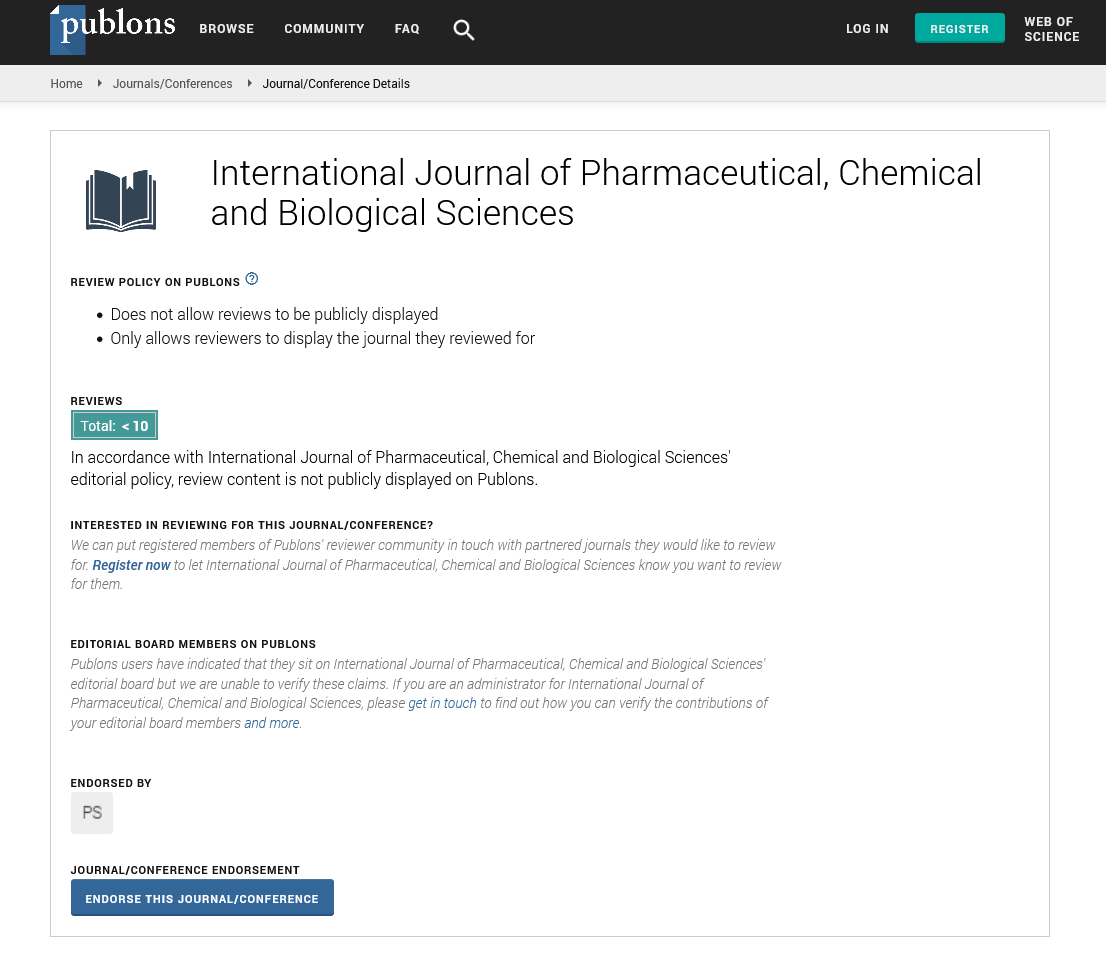Abstract
Author(s): D. Jeyanthi1, D. Jim Livingston2 and CD. Sheela2*
A series of Co(II), Ni(II), Cu(II), Zn(II) and Cd(II) complexes with a Schiff base derived from 2- (4-chlorophenyl)chroman-4-one and 4-aminoantipyrine have been synthesized and characterized. The nature of bonding and the geometry of the complexes have been deduced from elemental analysis, spectral (IR, UV-Vis, 1H NMR, ESR and EI-mass), magnetic moment measurements and conductivity measurements. The electronic absorption spectra and magnetic susceptibility measurements of the complexes indicates octahedral geometry for all the complexes. The EPR spectra of copper complex in DMSO at 300 K and 77 K were recorded. The antimicrobial activities of the compounds have been studied against microorganisms such as Escherichia coli, Chromobacterium, Staphylococcus aureus, Bacillus subtilis, Candida albicans and Aspergillus niger by well-diffusion technique using DMSO as the solvent and the results revealed that the complexes are more potent bactericides and fungicides than the ligand. The redox behaviour of the copper(II) complex studied using cyclic voltammetry are reported

